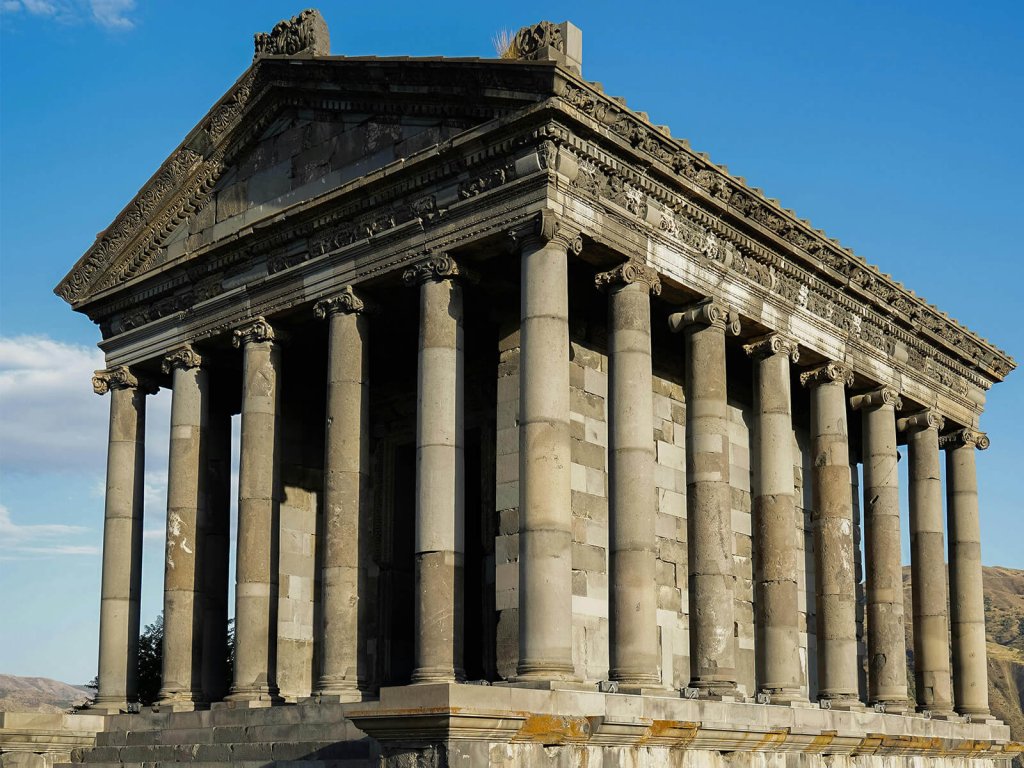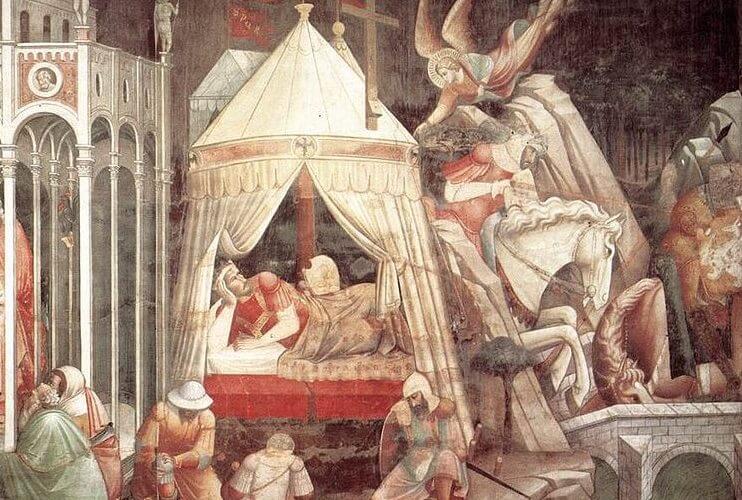The Temple of Garni, a symbol of Armenia’s ancient pagan heritage, stands as the only surviving Greco-Roman structure in the country. Located in the Kotayk Province, it is a testament to Armenia’s historical blend of local and foreign cultural influences. With its Hellenistic and Roman-inspired design, the Temple of Garni holds a unique place in Armenian history and remains one of the most visited sites in the nation today.

Historical Background
The Temple of Garni dates back to the 1st century AD and was constructed under King Tiridates I (Trdat I), who was crowned by Emperor Nero in Rome. Following his coronation, Nero provided King Trdat with resources to restore Armenia’s war-damaged sites, including funds and expert builders. Upon his return, King Trdat began the construction of the Temple of Garni within the walls of the Garni Fortress. The temple was completed in 77 AD, and its design reflects a blend of Greco-Roman styles with Armenian architectural elements.
The temple was initially built to honor Mihr, the Armenian god of the sun and fire, reflecting the Persian influence on Armenian pagan beliefs. Mihr, known as Mithra in Armenian, was worshipped with ritual sacrifices within the temple grounds, emphasizing the temple’s religious significance in ancient Armenian society.
Architectural Features
Greco-Roman Influences
The Temple of Garni is notable for its blend of Hellenistic, Roman, and Armenian architectural styles. Its construction follows the classical Greco-Roman temple layout, complete with columns, high steps, and a triangular pediment. However, local Armenian elements are evident in its unique proportions and certain stylistic details.
The temple’s structure features 24 Ionic columns that encircle a central chamber, or “cella,” which was historically used for religious practices. The intricate stone carvings and the detailed stone base reflect both Greek influence and Armenian craftsmanship, making the Temple of Garni a distinct example of cultural synthesis in architecture.
The Temple’s Surroundings and Location
The Temple of Garni is situated in the scenic Azat River Gorge, surrounded by dramatic landscapes of cliffs and valleys. The location of the temple adds to its grandeur, with the backdrop of the rugged Armenian landscape heightening its visual impact. Adjacent to the temple are the remains of Garni Fortress, which served as a defensive structure for the temple complex.
Close to the temple is a Roman Bathhouse featuring an intricate mosaic floor that reads, “We worked but received nothing.” This nearby structure provides further insight into the influence of Roman culture on Garni and highlights the architectural advancements present in Armenia during that era.
Cultural and Religious Significance
The Temple of Garni originally served as a site for pagan worship, with a special chamber designated for ritual sacrifices to Mihr. This connection to Armenia’s ancient belief system underscores its significance as a pre-Christian site. When Armenia officially adopted Christianity in 301 AD under King Trdat III, most pagan temples were destroyed to make way for Christian churches. The Temple of Garni, however, was spared, likely due to its integration into the Garni Fortress, which may have contributed to its preservation.
Today, the temple stands as Armenia’s only surviving pagan structure and serves as a symbol of Armenian cultural pride. It is a reminder of the country’s rich pre-Christian heritage, a history that continues to resonate with Armenian neopagans, also known as Hetanists, who still visit the temple for worship, weddings, and celebrations.
Over the Centuries
Destruction and Restoration
The Temple of Garni withstood the initial waves of Christianization; however, it was eventually destroyed by a massive earthquake in 1679. The quake, which struck the region with great force, left the temple in ruins. The destruction was so severe that it affected the Yerevan Fortress and other religious structures in the area.
For nearly 300 years, the temple lay in ruins until restoration efforts began in 1969. By 1975, the Temple of Garni had been meticulously reconstructed, bringing it back to its original appearance. Today, it stands as both a museum and a cultural site, showcasing Armenia’s ancient architecture and spiritual heritage.
Modern-Day Importance and Tourism

The Temple of Garni is now a major tourist attraction, drawing visitors from around the world. Its striking architecture, historical significance, and scenic location make it a must-see destination in Armenia. As a museum, the temple educates visitors on Armenia’s ancient past and its architectural innovations.
In addition to tourism, the temple remains an active site of worship for Armenia’s neopagan community. Practitioners of the native Armenian religion, known as Hetanosutyun, or Heathenism, visit the temple for religious ceremonies, weddings, and seasonal festivals. This modern connection to Armenia’s ancient spirituality adds to Garni’s cultural significance and enhances its role as a symbol of enduring Armenian heritage.
Conclusion
The Temple of Garni stands as a unique preservation of Armenia’s pre-Christian heritage and an architectural masterpiece. As the only Greco-Roman structure in Armenia, it embodies a blend of cultures, influences, and history. Whether visited as a tourist destination or a place of worship, the Temple of Garni continues to connect modern Armenia with its ancient roots, embodying a legacy of resilience and cultural pride.
Frequently Asked Questions about the Temple of Garni
What is the significance of the Temple of Garni?
The Temple of Garni is Armenia’s only standing Greco-Roman structure, representing Armenia’s pre-Christian heritage and its historical blend of Hellenistic, Roman, and Armenian cultural influences.
Who was the Temple of Garni dedicated to?
The temple was dedicated to Mihr, the Armenian god of the sun and fire, influenced by Persian beliefs. Mihr was worshipped through rituals and sacrifices at the temple.
When was the Temple of Garni built?
The temple was built in the 1st century AD, under King Tiridates I, with construction completed in 77 AD. The resources and expertise were provided by the Roman Emperor Nero.
How did the Temple of Garni survive Christianization?
While most pagan temples were destroyed when Armenia adopted Christianity in 301 AD, the Temple of Garni was spared, possibly due to its location within the fortified walls of Garni Fortress.
Can visitors access the Temple of Garni today?
Yes, the Temple of Garni is open to the public as a museum and a cultural site, attracting tourists and neopagans alike who come to explore its history and significance.




